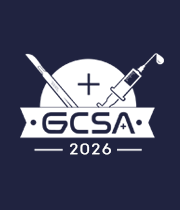Regenerative Medicine in Reconstructive Surgery
The fusion of tissue engineering, stem cell therapy, and biomaterials has opened transformative pathways for restoring form and function in complex defects. Regenerative medicine in reconstructive surgery is no longer a future promise but an evolving clinical reality. Surgeons now utilize bioengineered skin, cartilage scaffolds, and adipose-derived cells to enhance wound healing and tissue integration. In craniofacial, breast, and extremity reconstruction, these biologic tools offer alternatives to traditional grafts, reducing donor site morbidity and promoting more natural outcomes. Customized growth factor delivery and 3D bioprinting are further expanding surgical possibilities. As research advances, the focus is shifting toward functional regeneration—restoring not just appearance but also biomechanical integrity. This interdisciplinary convergence is redefining what’s possible in reconstructive care, aligning science with patient-specific solutions.



Title : Spontaneous colonic perforation in a pediatric patient with acute febrile lllness: A case report
Abhiraj Yadav, Manipal College of Medical Sciences, Nepal
Title : Unusual cause of small bowel obstructions in infants: A warning letter to parents
Gamal Al Saied, Al-Azhar University, Egypt
Title : From panic to protocol: A ?IP on developing a paediatric breast referral pathway
Neriah Mangion, University Hospital Sussex NHS Foundation Trust , United Kingdom
Title : Improving scrotal examination in male patients presenting with acute abdominal pain: An audit and quality improvement intervention
Maab Elsaddig, University Hospital Lewisham, United Kingdom
Title : Mapping pediatric general surgery training in low and middle income countries: A scoping review
Habba Mahal, University of Alberta, Canada
Title : Improving implementation of enhanced recovery after cesarean section protocol in resource limited setting of Koidu Government Hospital Sierra Leone 2024/25. A quality improvement project from evidence to reality
Hailemariam Getachew, PIH, Sierra Leone